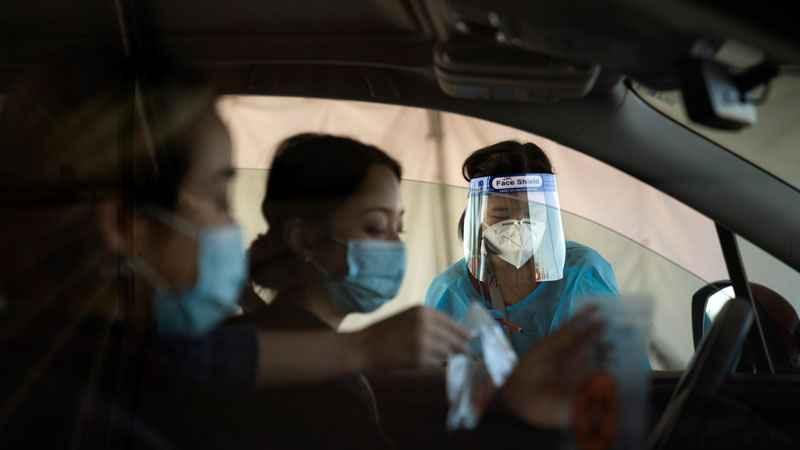MDH: Minnesota reaches milestone of 1 million COVID-19 tests through community sites

Medical assistant Linh Nguyen assists two women with COVID-19 testing at a testing site set up at the OC Fairgrounds in Costa Mesa, Calif., Monday, Nov. 16, 2020.[AP/Jae C. Hong]
The Minnesota Department of Health announced on Wednesday that it has passed 1 million tests administered through the state’s community testing sites.
There are currently more than 20 testing sites located around the state, all of which offer no-barrier access to testing.
“This milestone is a credit to the incredible effort from so many people around the state, and it reminds us of the continued importance of testing for preventing the spread of COVID-19,” Dan Huff, MDH assistant commissioner for health protection, said. “Testing has been a vital part of our response to the pandemic all along, and it remains one of our most powerful tools to beating this virus. Even as we see progress in vaccination efforts, we must remain vigilant and follow the safety guidelines of masking, social distancing, staying at home if sick, and getting tested.”
In all, Minnesota has conducted more than 6.4 million tests since the start of the pandemic. While many of those tests are done through private health care systems, long-term care facilities and other settings, the community testing sites offer tests to any person who believes they need one, with or without insurance.
This week’s milestone marks 1 million tests through those community testing sites.
“Our testing strategy has focused on reaching as many people as possible, and offering options to reduce barriers for people,” Huff said. “As Minnesotans across the state continue returning to the classroom, youth sports and other activities, we need people to continue seeking out testing so we can identify cases early and help those who have COVID-19 know what actions they can take to avoid spreading the virus to others in their community. The importance of that testing is reflected in our updated testing recommendations, which urge young people ages 12-25 to seek out regular testing. Regular testing of our young people helps protect their families and friends who may be at higher risk for severe disease and it gives our schools the best chance to succeed.”
In addition to people with symptoms, case contracts and those interacting with people outside their household, MDH recommends regular testing every two weeks or monthly for young people in K-12 schools, colleges and trade schools, young athletes, and those involved in other extracurricular activities using the state’s extensive statewide testing operation.
“Contrary to some myths, testing does not sideline your team,” Huff said. “COVID infections can and do put teams on the bench. Young people are often asymptomatic, allowing them to inadvertently spread the virus, and this can lead to bigger outbreaks that really hurt communities. Testing helps identify cases early, so they don’t have a chance to spread. Keeping youth sports safe is key to keeping sports and schools open.”
Residents have several ways in which they can access no-barrier testing, including the community testing sites, the mail-order at-home test program, and clinics and hospitals across the state. Tests remain free of cost to those getting the test, but they are asked to provide their insurance information so the state can seek reimbursement from insurance companies.